 Your new post is loading...
 Your new post is loading...
When a book telling people to throw away almost everything they own becomes a best seller and the start of a spiritual movement, it’s a good indication we’re consuming too much. But it’s hard to reconcile this idea when so many families, even in some of the world’s most durable economies, feel like they are barely getting by. Households have never had so many material goods, yet we hear constant reports of economic anxiety and feelings of hopelessness. The problem is livings standards. Our expectations of what we should own have increased—but incomes, for many of us, haven’t kept up. The disconnect leaves households vulnerable and struggling. There is no doubt living standards are rising. People around the world, of all income levels, are living longer, finding more leisure time, and enjoying more luxuries than at any time in history. Remember, only 30 years ago, air-conditioning was a luxury. Now it’s practically seen as a necessity....
So why is this? Why do some societies not encourage casual smiling? I got my answer, or at least part of one, when I stumbled across a new paper by Kuba Krys, a psychologist at the Polish Academy of Sciences. In some countries, smiling might not be a sign of warmth or even respect. It’s evidence that you’re a fool—a tricky fool. Krys focused on a cultural phenomenon called “uncertainty avoidance.” Cultures that are low on this scale tend to have social systems—courts, health-care systems, safety nets, and so forth—that are unstable. Therefore, people there view the future as unpredictable and uncontrollable. Smiling is a sign of certainty and confidence, so when people in those countries smile, they might seem odd. Why would you smile when fate is an invisible wolf waiting to shred you? You might, in those “low-UA” countries, even be considered stupid for smiling. Krys also hypothesized that smiling in corrupt countries would be, um, frowned upon. When everyone’s trying to pull one over on each other, you don’t know if someone’s smiling with good intentions, or because they’re trying to trick you....
The act of deleting photos, apps and other content from phones causes many people to feel low, research has revealed. Dubbed "Post Deletion Stress Disorder" (PDSD), experts have warned that more than half of consumers suffer emotional effects after deleting content to make way for pictures, videos and selfies.
The research conducted by Western Digital (WD) suggested that more than half (56%) of UK consumers are forced to delete content from a technology device and have then regretted doing so. The link between deleting content and feeling down because of it could stem from the fact that the average consumer is now spending roughly £3,241 on content such as pictures, music, apps and movies, only to have to delete it.
"Running out of storage space isn't the greatest challenge threatening mankind at the moment, but it's certainly an annoyance for a great many consumers," said Jim Welsh, executive vice president and general manager of Content Solutions at WD. "Our findings clearly show that currently consumers are sacrificing precious memories and valuable content to make more space on their devices."...
A recent study from Accenture and SAP hybris found that B2B buyers are looking for a seamless omni-channel buying experience, especially online. According to the study, digital experiences are becoming more important to B2B customers – leaving businesses that have sub-par online experiences behind.
In 2015, 75 percent of B2B buyers said they research at least 25 percent of their work-related purchases online, even if they made the actual purchase offline.
Most B2B buyers begin the research process by visiting consumer marketplaces, such as Amazon or eBay (33 percent), or search engines (26 percent). However, B2B businesses are struggling with integrating the online and offline experience: Only 60 percent of respondents have customer names available on all channels, while only 48 percent have customer shipping and billing addresses available on all buying channels...
Ready or not, it’s holiday time. As a brand, it’s important to understand what your consumers’ path to purchase looks like as they gear up for the holidays.
Some key questions one might consider are items like; how consumers are deciding on gifts, where they actually purchase these gifts, and most importantly, how can you leverage the use of social media to enhance your holiday campaigns.
We’ve taken some time to look into the different steps a consumer goes through, and laid out some tips that are sure to help boost your marketing efforts on social media this holiday season....
The brainiacs at Harvard and Stanford are at it again. Just this past month in the Journal of Marketing Research, several Ivy School consumer neuroscience researchers led by Dr. Uma Karmarkar, whom I had the opportunity to interview for this piece, explained to me how putting the price first (called price primacy)—before a user sees the actual product—affects buying behaviors.
Specifically, according to the researcher’s comments in a Working Knowledge magazine exposé, “that price primacy (viewing the price first) makes consumers more likely to focus on whether a product is worth its price, and consequently can help induce the purchase of specific kinds of bargain-priced items.”
Mind. Blown. Let’s look at three pricing strategy examples and some specific takeaways from Karmarkar’s findings to see how we can repurpose her research and turn it into actionable solutions....
The three Miami experiments show that as long as people think information is personalised to them they are interested – even if there is no actual personalisation. The “Dear First Name” error is not a problem if the remainder of the email contains information that is of interest to the recipient. Because of this, they think the material is personalised.
Of course, this assumes you know the real interests of your target customers. This is where web technologies let marketers down. Web page advertising, for instance, uses past browser history to target adverts to people. However, it becomes incredibly annoying when you always see advertisements for items you have already purchased. No longer is the advertising about something in which you are interested. As a result, it is like calling David by the name Kevin.
Similarly, many e-commerce sites use visitor purchase history to present a page of options that is “personalised”. However, this frequently fails. If you have been shopping for gifts for a friend at an online retailer you are not that interested in the items yourself. Hence, the so-called “personalised” page is nothing of the sort. It would be better suited to your friend.
For marketers, there is another problem. People do not like their activities being tracked. In one study conducted by Adobe more than two-thirds of people say it is “creepy” when websites track their activities. Increasingly, too, web browsers offer private browsing and Internet security suites are preventing the data from being collected in the first place. The result, inevitably, is going to be that just as marketers start to be able to gather more information to provide greater levels of web personalisation, users are going to stop that from happening....
Note: We’re expanding the topics we’re covering on AdEspresso. From now on you can expect us talking not only about Facebook ads but also discuss other topics you are hugely interested in.
The first of them is conversion rate optimization.
And to kick it off we decided to look at some traits of human behavior to see how they affect our buying choices and how to use this knowledge in improving conversions.
Like decision making, for instance.
Because, you know, turns out we’re not that great at making decisions after all....
Once a visitor visits your ecommerce store they have already demonstrated commercial intent. Now it’s your turn. Are your offers and messages targeted to take advantage of that warm lead and convert them into buyers?
In his book Influence: The Psychology of Persuasion, Dr. Robert Cialdini discusses six psychological pressures that influence consumers in that critical moment of decision, whether to pull the purchasing trigger or not. Inspiring potential customers boils down to one key element: persuasion and how skilled you are at pulling it off. According to Dr. Cialdini, here are the six factors that motivate customers to say yes to your brand....
Sustained incremental growth in the consumer package goods (CPG) and retailing industries has never been more elusive. Consumer trends are leaning increasingly toward less processed, more health-conscious products. At the same time, traditional manufacturers and retailers are grappling with declining foot traffic and rapidly evolving e-commerce purchase options.
But some CPG and retail companies are working hard to stem the tide—putting the customer’s wants and needs first, so they can be smarter at anticipating the needs of today’s rapidly evolving tastes. Here are two recent examples of CPG companies and one retail enterprise that have successfully innovated by becoming customer-centric:...
“Most people can’t answer the simple question of why they want the things they want. That’s because our brain drives our decision-making process in ways that we’re not really aware of. “- Michael Fishman
Traveling through this digital world we’ve built for ourselves is a dizzying experience. We see certain structures and terminology that we are accustomed to from the physical realm (words like “pages”) but in another sense, it forces us to think and make decisions in entirely new ways. There’s a new psychological journey to be learned and perfected.
Our construction of (and obsession with) social media sites like Facebook and Twitter reflect attempts to streamline and reconstruct our already established social interactions, but inevitably there’s something unique and new established as well.
For the purposes of this post, I’d like to take a look at how this concept applies to shopping. More specifically, how the process of online shopping has changed the psychological journey one takes on their way towards making a purchase. This is important because over the past few years especially, shopping online has become the preferred purchasing method for the typical American consumer....
Consumers are shifting spending online, with 71% of surveyed consumers in UK and 61% in US, doing more than half their 2014 holiday shopping online, according to research by Wipro Digital.
This is a significant increase from 2013, when 45% in UK and 36% in US reported doing the majority of their shopping online.
This trend is set to continue with half of the surveyed consumers in US and UK saying that they plan to do more shopping, online in the 2015 holiday season, as compared to just 6% in UK and 4% in US who plan to increase their in-store shopping...
It's the great American pastime.
No, I'm not talking about baseball. Or stuffing your face with apple pie. Or arguing about politics with your family over Thanksgiving dinner. No, I'm talking about the great American pastime of buying stuff.
Unlike those other pastimes, however, which have remained relatively unchanged over the years, the way we buy has evolved considerably. For example ...
In 1914, you might've been tempted to buy a (non-branded) pastry after noticing a delicious smell emanating from the local bakery.
In 2014, you might be tempted to buy a Pop-Tart after seeing a commercial for Pop-Tarts on TV, or after reading an article about Pop-Tarts on The Wall Street Journal website, or after hearing about (or attending) a Pop-Tarts-brandedsummer concert series....
|
US internet users are equally divided in their intentions to be plugged in or unplugged to the web while on vacation. Yet, according to research, most ultimately do connect to the internet regardless of gender or age.In March 2016, Intel, along with MSI International, surveyed 1,504 internet users ages 21 to 54 in the US about their internet habits while on holiday. Respondents were evenly split when asked if they had gone on vacation with the intention of being offline at some point in the past year. A disparity did exist when looking at gender: More than half (57%) of men said they did plan to be disconnected, compared to 44% of women. And more interestingly, when looking at age, the older the internet user, the less likely they were to have anticipated on unplugging while away from home. More than three-fifths of those ages 51 to 54 said they had not considered any unplugged vacationing, compared to 44% of millennials ages 21 to 30....
Much has been written about “millennials” and much of it makes sweeping assumptions, often representing this vast group as “the yoof,” a homogenous bunch of bright young things with idealistic worldviews and a love for over-sharing on social media. However, since the term was first coined, sections of this group have become proper grown-ups, albeit of a slightly different sort than the generation before. They aren’t the buyers of tomorrow; they are the buyers of today. Some are running proper, functioning companies and not just aspirational start-ups with their friends. Some are even doing both of these things and succeeding. Some are already political leaders, parents and professors.
“By 2017, the “millennial” generation is expected to outspend the baby boomers, according to a study by Berglass + Associates recruiting firm.” - CNBC
All this means that when it comes to luxury or premium brands, the millennial mindset and lifestyle isn’t something to consider for “future-proofing” workshop exercises; it’s something to act upon now. Those who don’t technically fit within the demographic are being influenced by the “millennial way,” either as their parents or as colleagues. Therefore, any brand looking to maintain or move into a premium or luxury space needs to take note and act fast. Let’s look at some of the key characteristics of this group and then explore the implications when it comes to brand design, experience and communications....
For this holiday season, 80% of consumers plan to spend as much as or more than they did last year, according to a recent report fromSAS.
The report was based on data from a survey of 3,458 consumers in the US, Canada, the UK, Australia, and New Zealand.
The US leads expected spending growth, with 29% of US respondents saying they plan to spend more this year. Most Canadian shoppers, on the other hand, say they are tightening their budgets this year.
Millennial respondents (age 18-29) are the most likely to say they will increase their spending this year, whereas older consumers are the most likely to say they'll stick with last years budget....
Consumers give great consideration to color and visual appearance, and it influences their decision-making when it comes to purchases. When making snap judgments in shopping, customers place visual appearance and color over everything else. The following are the best colors for different contexts (for North American markets)....
Accenture shares results of 2015 Seamless Retail Research Survey. Insights on retail trends, connected shopping and customer experience.
Accenture went on a journey to understand consumer preferences to shop seamlessly across channels and the ability of retailers to deliver that seamless experience.
Consumer Research SurveyAccenture surveyed nearly 10,000 adult consumers in November 2014 in 13 countries around the globe: Brazil, Canada, China, France, Germany, Italy, Japan, Mexico, South Africa, Spain, Sweden, United Kingdom and United States. The survey targeted respondents who shop in a multi-channel way and use the internet and their smartphones regularly....
As 90% of the information our brain receives is visual and we already know that color can influence our mood, perception and behavior, we definitely should pay more attention to what color we use.
Companies are already testing colors everywhere: advertisements, banners, landing pages, buttons, call-to-action. Sometimes one color A/B Testing can reveal big secrets: HubSpot tested the color of their button and they found out that the red one outperformed the green one by 21%.
So, as you can see, colors can have a big influence. This is what happens with the decision making process, too because it may influence your online shoppers.
Enjoy the infographic below to find out more about color psychology and how it can influence your consumer purchasing behavior....
SUMMARY: There is a growing consensus among marketers that "last-click" attribution is suboptimal. However, multi-touch attribution, or the modeling of all marketing channels' contributions to customer conversions, can be a daunting task.
In this week's chart, we look at more than two million customer interactions across eight B2B and B2C sectors to discover how many steps customers take before making a purchase to help you build an effective online attribution model....
Technology isn't simply something that helps Young People get something done, i.e. make a purchase quickly and efficiently. Technology and interactive media play a role in identity formation and lifestyle. Online shopping doesn't do this for people. It's merely a convenience.
Yet a growing body of research indicates stores that fail to play an influential role within digital channels where young people pre-shop, socialize, and participate in virtual communities first, won't get the sale in the end.
Young People want to do more than consume; they want to co-create, participating in the emerging sharing economy. With the rise of the makers and locavore movements, and even seemingly niche trends like the resurgence of home-based and craft brewing, it's time retail environments built on active consumption....
The better we understand our customers, the better we become at conversion optimization. Although the digital age has given rise to new forms of marketing, it has not fundamentally changed human psychology.
Regardless of how digital marketing innovations change, we can still depend on the findings of psychology to support powerful conversion optimization techniques.
I want to explain how an understanding of your customer’s psychological curiosity can change how you approach your marketing initiatives. Prepare for some pleasant surprises and rude awakenings.
Customers are researchers. Satisfy their need for information....
According to research based on an analysis of more than 100,000 e-commerce stores, 50.3% of the traffic in virtual shops are from mobile devices (being 40.3% from mobile phones and 10% from tablets) and only 49.7% from computers.
It may sound crazy, but the fact is that mobile commerce is already a reality. Also according to research, the Google search traffic comprised 18% of traffic from computers and only 12% for mobile phones.
These data seem to show that computers are being used for research products, while mobile devices for spontaneous purchases, which are instigated from Social Media, Email Marketing and SMS Marketing. The increase in purchases on mobile devices also brings another exciting trend, which we are calling “always buying”....
At a 1982 planning retreat, someone on the Mac team, “thought they should do some market research to see what customers wanted. ’No,’ [Jobs] replied, ‘because customers don’t know what they want until we’ve shown them.’”
Henry Ford famously stated “If I had asked people what they wanted, they would have said faster horses.”
I agree with the sentiment behind both these quotes. Asking consumers what they want is poor research and just plain lazy. Where I disagree is when people trot out quotes like this as justification for dismissing market research as a valuable tool in the innovation process. In reality, these quotes highlight two common pitfalls of poor market research in the world of innovation and growth strategy....
Effective content has never been more important for successful brand marketing. The proliferation of social media channels and mobile technology, coupled with the hyperconnected-consumer’s demand for instant, personal, and relevant content, have changed the way marketers engage with consumers.
While a handful of brands have cracked the code and consistently deliver high-performing content, a majority of brands still fall short on their content efforts, failing to meet consumer expectations and business objectives. The difference between those brands that succeed and those that fall short is their content model. Successful brands implement an insights-driven, consumer-centric approach, allowing them to think and act more like a publisher and less like a traditional advertiser....
|



 Your new post is loading...
Your new post is loading...




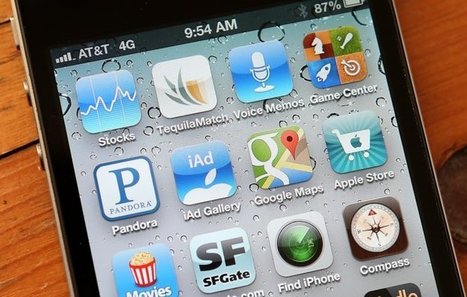
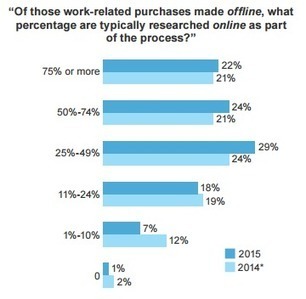
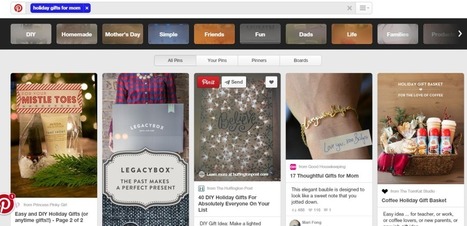


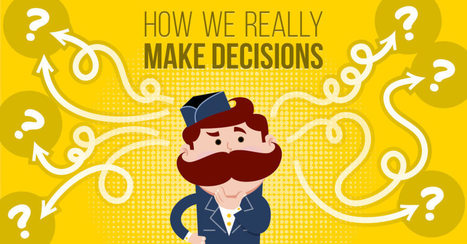





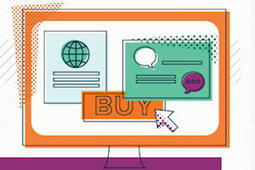

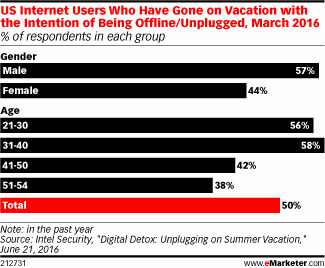


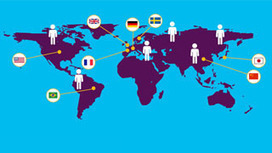

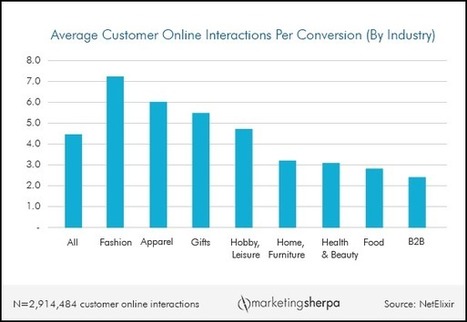

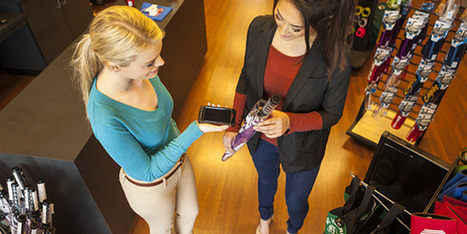


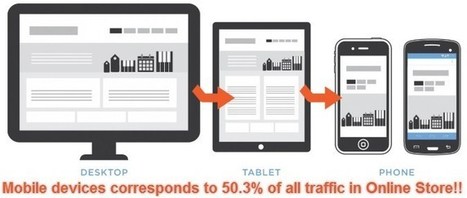









Very thoughtful post and recommended reading. 9/10